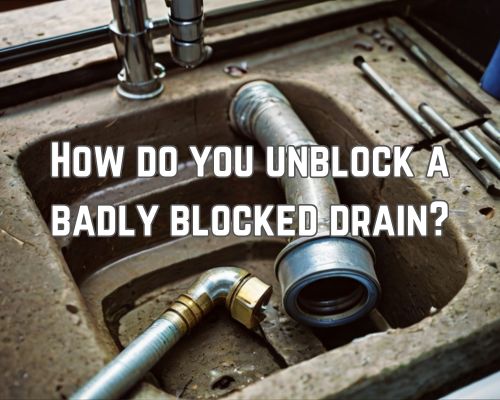Have you ever experienced a badly blocked drain? It can be a frustrating and unpleasant situation to deal with. A blocked drain can cause water to back up and overflow, resulting in potential damage to your property.
Fortunately, there are several ways to unblock a drain and prevent further damage. Let us know it with Dean Owens of Plumber Warragul.

One of the most common methods to unblock a drain is by using a plunger. This tool creates pressure that can dislodge the blockage and allow water to flow freely.
However, if the blockage is severe, a plunger may not be enough. In this case, you may need to try other methods such as using a drain snake or chemical drain cleaners.
It is important to note that chemical drain cleaners can be harmful to the environment and should be used with caution.
Identifying the Blockage
If you’re experiencing a badly blocked drain, it’s important to identify the cause of the blockage before attempting to unblock it. This will help you determine the best method to use and avoid causing further damage to the pipes.
Signs of a Blocked Drain
There are several warning signs that indicate a blocked drain. These include:
- Water draining slowly or not at all
- Gurgling sounds coming from the drain
- Foul smell coming from the drain or surrounding area
- Water overflowing from the drain
If you notice any of these signs, it’s likely that you have a blocked drain that needs to be cleared.
Common Causes of Blockages
There are many different things that can cause a drain to become blocked. Some of the most common causes include:
- Hair and soap buildup in bathroom drains
- Food waste and grease buildup in kitchen drains
- Tree roots growing into outdoor pipes
- Foreign objects such as toys or sanitary products being flushed down the toilet
It’s important to identify the cause of the blockage in order to prevent it from happening again in the future.
For example, if the blockage is caused by hair and soap buildup in a bathroom drain, you can prevent it from happening again by using a drain cover to catch hair and regularly cleaning the drain with a mixture of baking soda and vinegar.
Clearing the Blockage
If you have a badly blocked drain, there are several methods you can use to clear the blockage. In this section, we will explore some manual methods, chemical treatments, and professional solutions that can help you get your drain flowing again.
Manual Methods
One of the easiest ways to clear a blocked drain is to use a plunger. This tool creates suction that can help dislodge the blockage and allow water to flow freely again.
To use a plunger, place it over the drain and push down gently to create a seal. Then, pump the plunger up and down several times, being careful not to break the seal. Repeat this process several times until the blockage is cleared.
Another manual method you can try is using a drain snake. This tool is a long, flexible wire that can be inserted into the drain to dislodge the blockage.
To use a drain snake, insert it into the drain and twist it gently as you push it further in. When you encounter the blockage, twist the snake around and pull it back out, bringing the blockage with it.
Chemical Treatments
If manual methods don’t work, you can try using a chemical treatment to clear the blockage.
One popular option is to pour a mixture of baking soda and vinegar down the drain. This will create a chemical reaction that can break up the blockage and allow water to flow freely again.
Alternatively, you can use a commercial drain cleaner, but be sure to follow the instructions carefully and use protective gloves and eyewear.
Professional Solutions
If manual and chemical methods don’t work, it may be time to call in a professional plumber like Plumber Warragul.
A plumber can use CCTV cameras to inspect the inside of your pipes and locate the blockage. They can also use tools like a drain snake or coat hanger to physically remove the blockage. In more severe cases, they may recommend pipe relining or replacement.
In summary, there are several methods you can use to clear a badly blocked drain. These include manual methods like plungers and drain snakes, and chemical treatments like baking soda and vinegar. Professional solutions like CCTV inspections and pipe relining are also available. If you’re not comfortable tackling the problem yourself, don’t hesitate to call in a professional plumber to get the job done.
